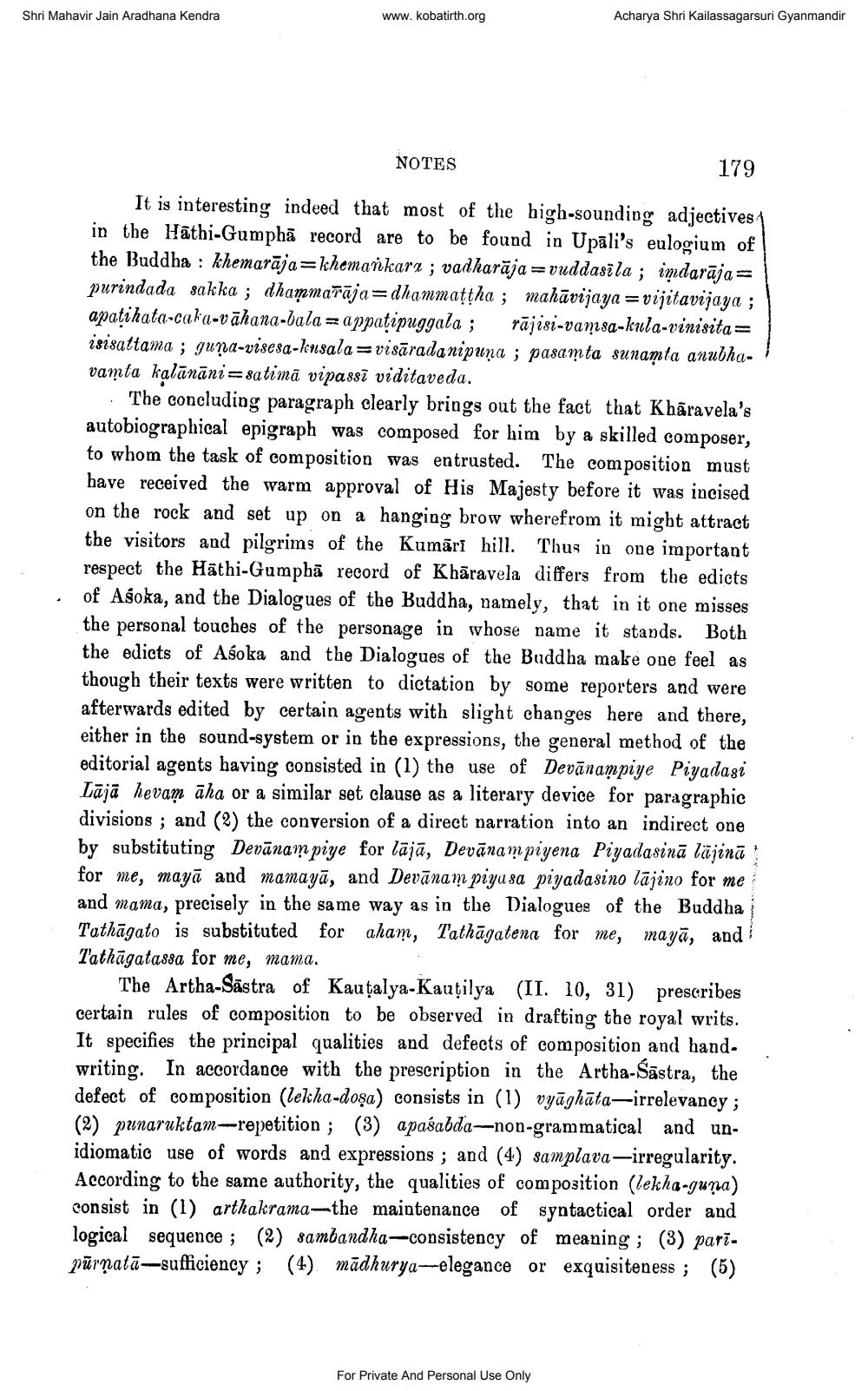________________
Shri Mahavir Jain Aradhana Kendra
www.kobatirth.org
Acharya Shri Kailassagarsuri Gyanmandir
NOTES
179
It is interesting indeed that most of the high-sounding adjectives in the Hathi-Gumphā record are to be found in Upāli's eulogium of the Buddha : khemarāja=khemankarı; vadkarāja =vuddasila ; imdarāja= purindada sakka ; dhammarāja=dhammattha; mahāvijaya =vijitavijaya ; apatihata-caka-vāhana-bala= appatipuggala; rājisi-vamsa-kula-vinisita= isisattama ; guna-visesa-lensala=visārada nipuna ; pasamta sunamta anubhavamta kalānāni = satimā vipassī viditaveda.
The concluding paragraph clearly brings out the fact that Khāravela's autobiographical epigraph was composed for him by a skilled composer, to whom the task of composition was entrusted. The composition must have received the warm approval of His Majesty before it was incised on the rock and set up on a hanging brow wherefrom it might attract the visitors and pilgrims of the Kumāri hill. Thus in one important
respect the Hathi-Gumphā record of Khāravela differs from the edicts · of Asoka, and the Dialogues of the Buddha, namely, that in it one misses
the personal touches of the personage in whose name it stands. Both the edicts of Asoka and the Dialogues of the Buddha make one feel as though their texts were written to dictation by some reporters and were afterwards edited by certain agents with slight changes here and there, either in the sound-system or in the expressions, the general method of the editorial agents having consisted in (1) the use of Devānampiye Piyadasi Lājā hevam āha or a similar set clause as a literary device for paragraphic divisions ; and (2) the conversion of a direct narration into an indirect one by substituting Devānampiye for lājā, Devānampiyena Piyadasinā läjina: for me, mayā and mamayā, and Devānam piyu sa piyadasino lājino for me and mama, precisely in the same way as in the Dialogues of the Buddha Tathāgato is substituted for aham, Tathāgatena for me, mayā, and i Tathāgatassa for me, mama.
The Artha-Sāstra of Kautalya-Kautilya (II. 10, 31) prescribes certain rules of composition to be observed in drafting the royal writs. It specifies the principal qualities and defects of composition and hand. writing. In accordance with the prescription in the Artha-Šāstra, the defect of composition (lekha-doşa) consists in (1) vyāghāta—irrelevancy; (2) punaruktam--repetition ; (3) apaśabda--non-grammatical and unidiomatic use of words and expressions ; and (4) samplava-irregularity. According to the same authority, the qualities of composition (lekha-guna) consist in (1) arthakrama—the maintenance of syntactical order and logical sequence ; (2) sambandha-consistency of meaning ; (3) paripūrņatā-sufficiency; (4) mādhurya-elegance or exquisiteness ; (5)
For Private And Personal Use Only




